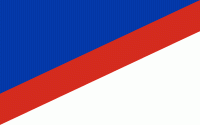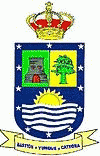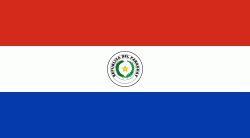Concepción Department (Departamento de Concepción)
 |
 |
Throughout history, this department has suffered a great amount of population instability, especially in the times of the colony, due to the advance of the Brazilian "bandeirantes" through the east and the attacks of the Mbayá – Guaicurú natives of Chaco, which, by then, were the lords of that region.
During the later years of the colony, it was organized a great campaign to re-conquest the invaded territories with the intention of defending by populating the region and also with the important task of the Jesuit that founded the city of Belén, of creating a Mission with the Mbayá natives, in the year 1760.
During the governments of Francia and López, the populating process got stronger and the north area of Paraguay became a territory dedicated to cattle. Francia ordered the construction of the penal colony of Tevego in 1813 in the Concepción department.
Once the Paraguayan War was over, Concepción united with Amambay, constituting a great territory for forestall and yerba plantations.
In the Twentieth Century, Concepción was proclaimed to be the second most important city of the country and it became an active commercial center. Because of its bind with Mato Grosso it experienced important development during that time.
In the year 1906, with the first plan to arrange the national territory, it was proclaimed the first department. Its limits were established with the decree 426 of 1973, as we know them nowadays.
Map - Concepción Department (Departamento de Concepción)
Map
Country - Paraguay
 |
 |
| Flag of Paraguay | |
Spanish conquistadores arrived in 1524, and in 1537 established the city of Asunción, the first capital of the Governorate of the Río de la Plata. During the 17th century, Paraguay was the center of Jesuit missions, where the native Guaraní people were converted to Christianity and introduced to European culture. After the expulsion of the Jesuits from Spanish territories in 1767, Paraguay increasingly became a peripheral colony, with few urban centers and settlers. Following independence from Spain in the early 19th century, Paraguay was ruled by a series of authoritarian governments characterized by nationalist, isolationist and protectionist policies. This period ended with the disastrous Paraguayan War (1864–70), during which the country lost half its prewar population and around 25–33% of its territory to the Triple Alliance of Argentina, Brazil and Uruguay. In the 20th century, Paraguay faced another major international conflict—the Chaco War (1932–35) against Bolivia—in which it prevailed. Afterwards, the country came under a succession of military dictators, culminating in the 35-year regime of Alfredo Stroessner, which lasted until his overthrow in 1989 by an internal military coup. This marked the beginning of Paraguay's democratic era, which continues to this day.
Currency / Language
| ISO | Currency | Symbol | Significant figures |
|---|---|---|---|
| PYG | Paraguayan guaranà | ₲ | 0 |
| ISO | Language |
|---|---|
| GN | Guarani language |
| ES | Spanish language |















